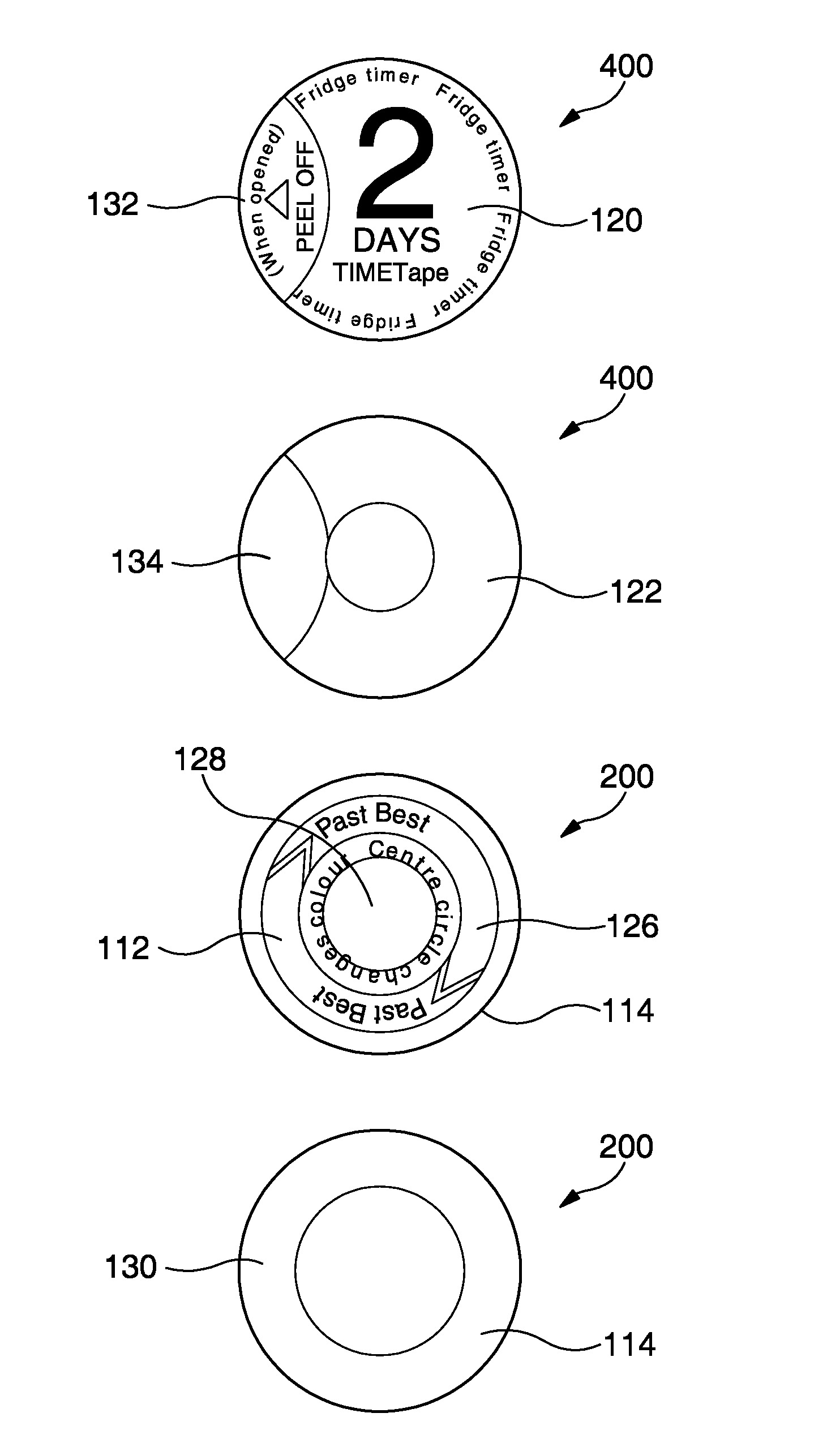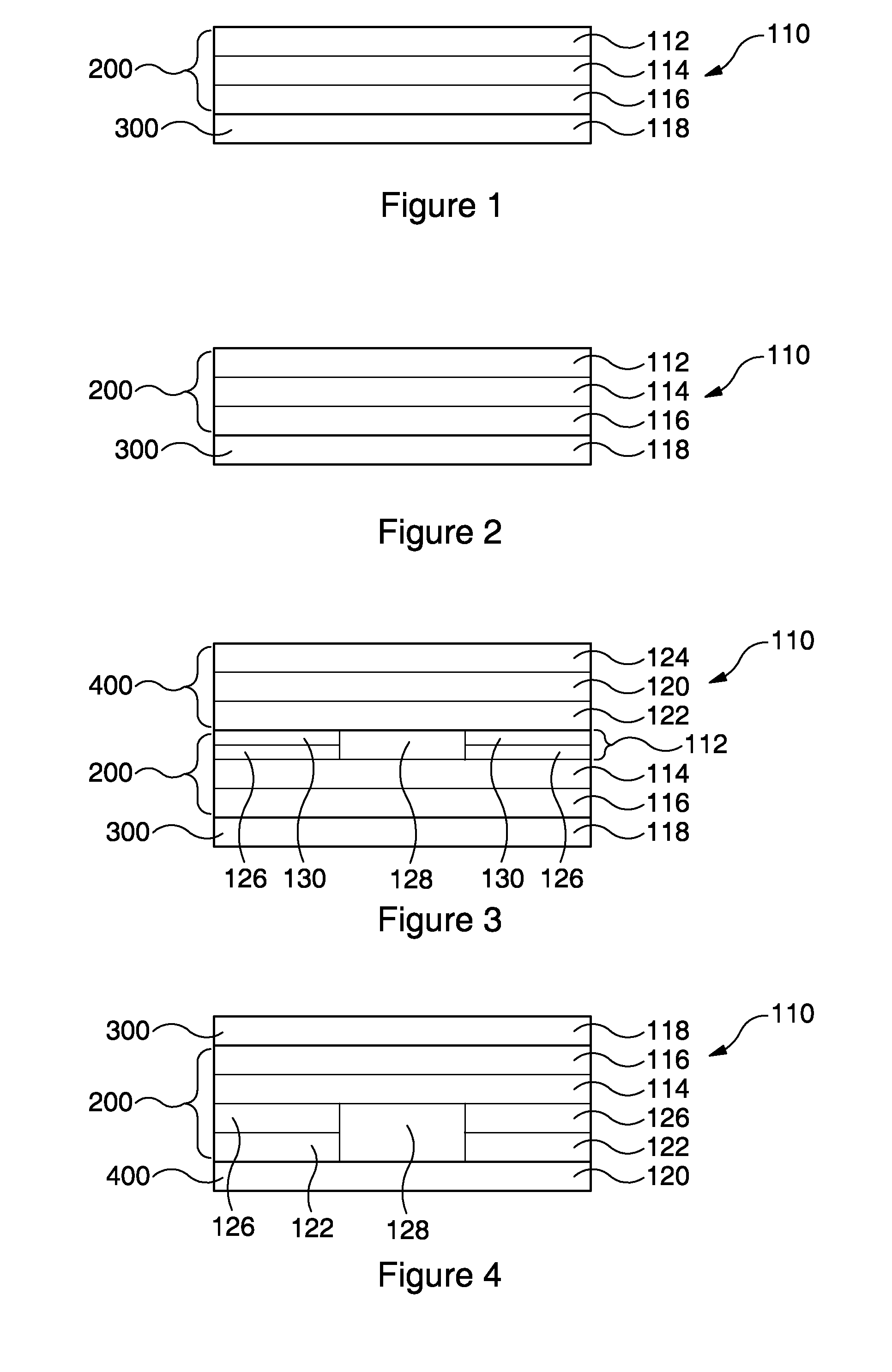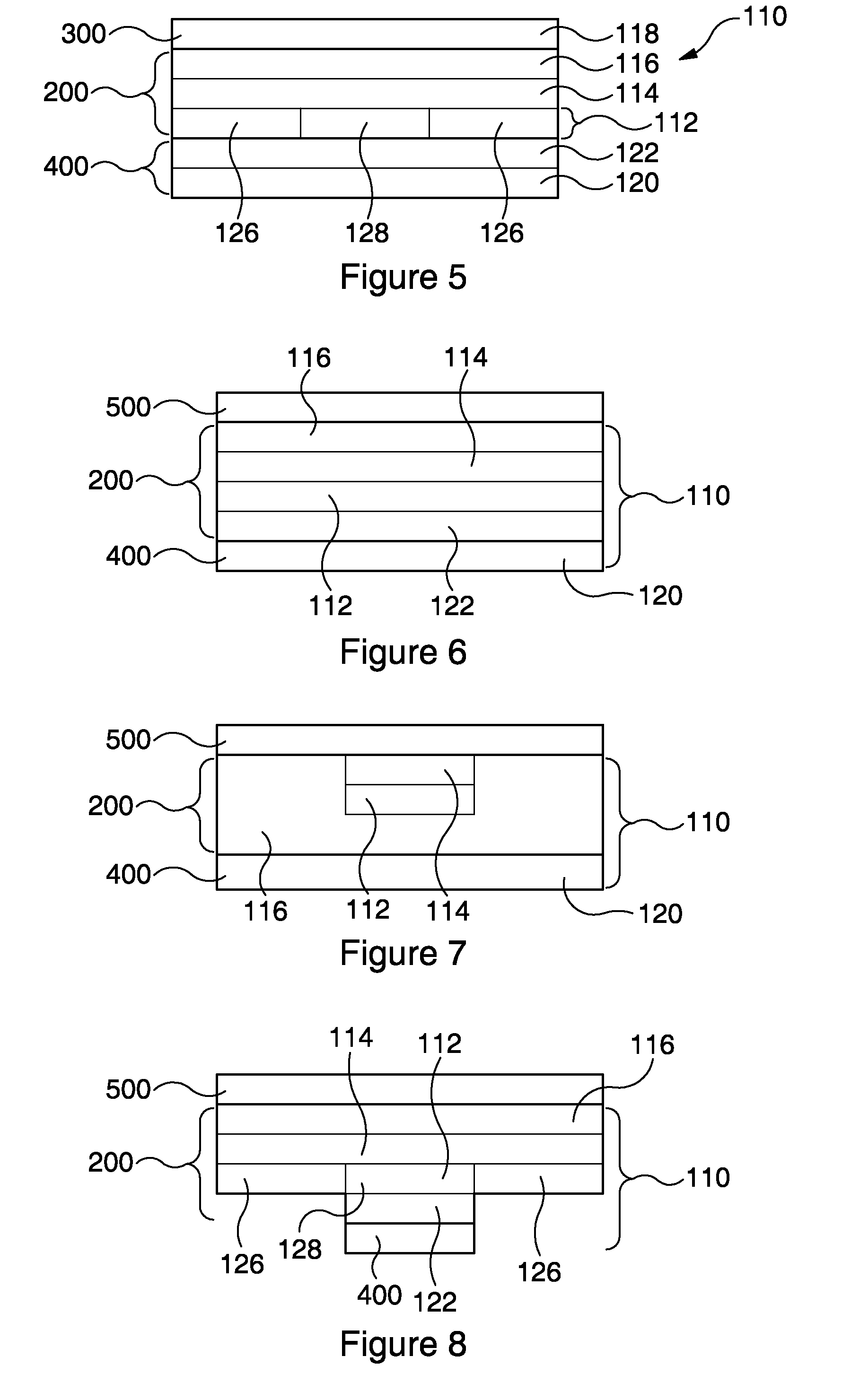Time Passage Indicator
a time-passing indicator and indicator technology, applied in the field of time-passing indicators, can solve the problems of inconvenient printing of the solution of the composition, inability to apply such indicators in the reduced form, and oxygen-sensitiveness
- Summary
- Abstract
- Description
- Claims
- Application Information
AI Technical Summary
Benefits of technology
Problems solved by technology
Method used
Image
Examples
example ink formulation 1
[0193]50 g of 15% w / v polyvinyl butyral and 5 ml of 40 mg / ml bromophenol blue in ethanol were combined to make a first solution. 4 g of this first solution were combined with 0.1 ml of 28-30% ammonium hydroxide and 0.2 ml of tributyl phosphate to create an ink.
[0194]The resulting ink when printed and stored in the refrigerator changes colour with 1 to 2 weeks.
example ink formulation 2
[0195]50 g of 15% w / v polyvinyl butyral and 5 ml of 20 mg / ml Bromophenol blue in ethanol were combined to make a first solution. 4 g of this first solution were combined with 30 μl of hexylamine and 0.3 ml of tributyl phosphate to create an ink.
[0196]The resulting ink when printed and stored in the refrigerator changes colour over 3 months.
example ink formulation 3
[0197]50 g of hydraCOAT HV 1105 S F and 5 ml of 160 mg / ml bromophenol blue in ethanol were combined to make a first solution. 4 g of this first solution were combined with 0.1 ml of 28-30% ammonium hydroxide and 0.1 ml of tributyl phosphate to create an ink.
[0198]The resulting ink when printed and stored in the refrigerator changes colour over 3 weeks.
PUM
| Property | Measurement | Unit |
|---|---|---|
| thickness | aaaaa | aaaaa |
| thickness | aaaaa | aaaaa |
| wavelength | aaaaa | aaaaa |
Abstract
Description
Claims
Application Information
 Login to View More
Login to View More - R&D
- Intellectual Property
- Life Sciences
- Materials
- Tech Scout
- Unparalleled Data Quality
- Higher Quality Content
- 60% Fewer Hallucinations
Browse by: Latest US Patents, China's latest patents, Technical Efficacy Thesaurus, Application Domain, Technology Topic, Popular Technical Reports.
© 2025 PatSnap. All rights reserved.Legal|Privacy policy|Modern Slavery Act Transparency Statement|Sitemap|About US| Contact US: help@patsnap.com



